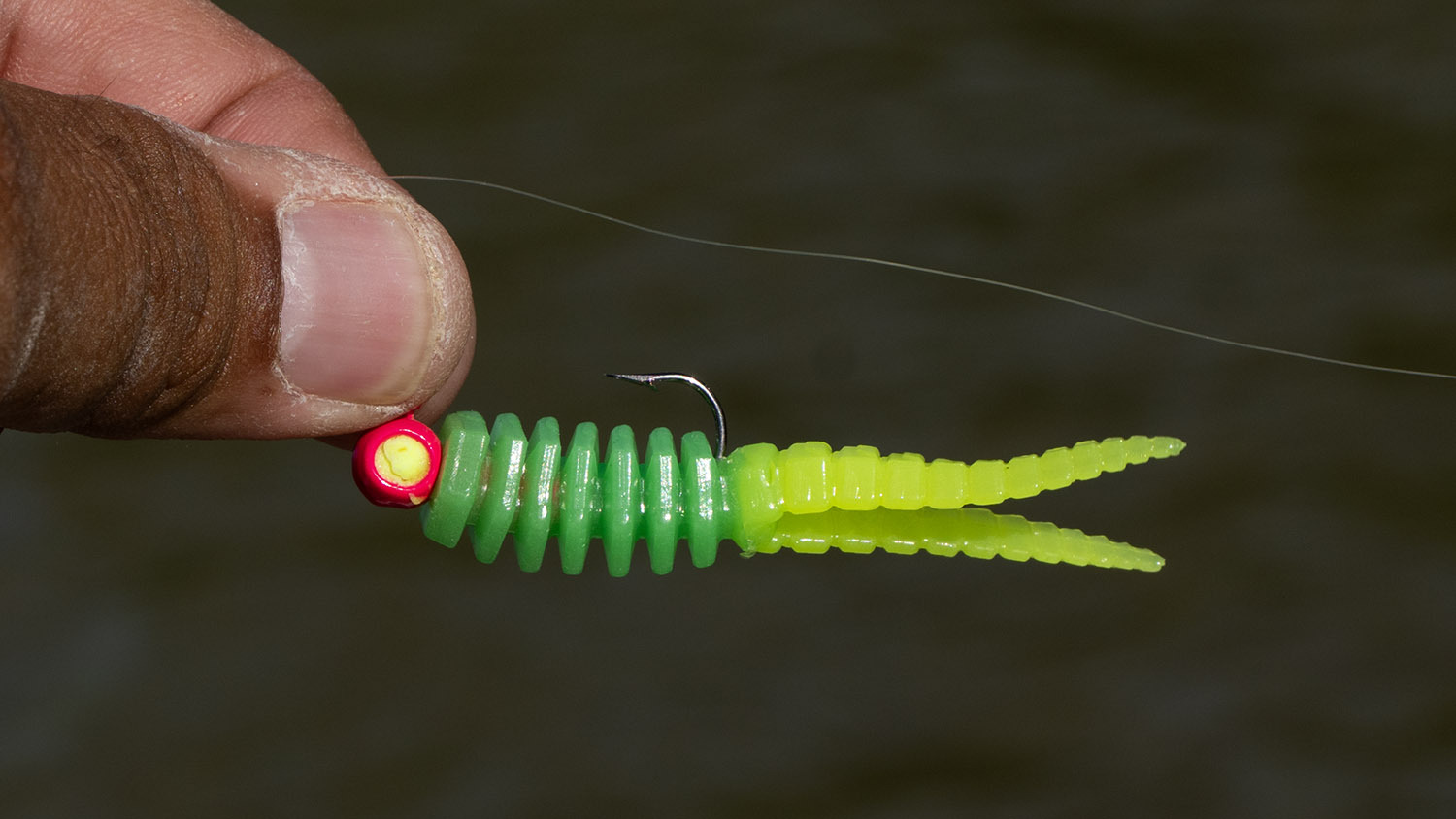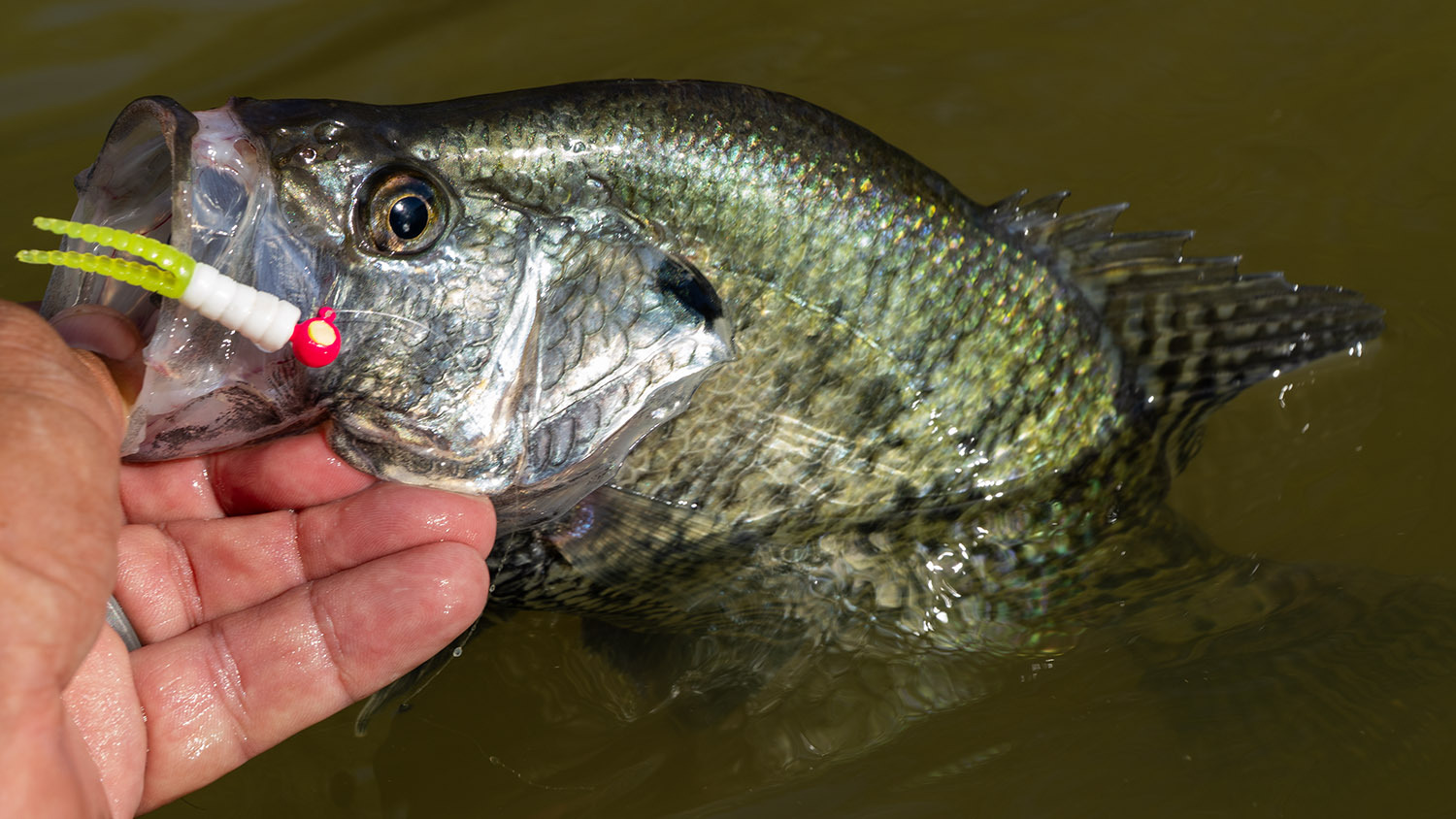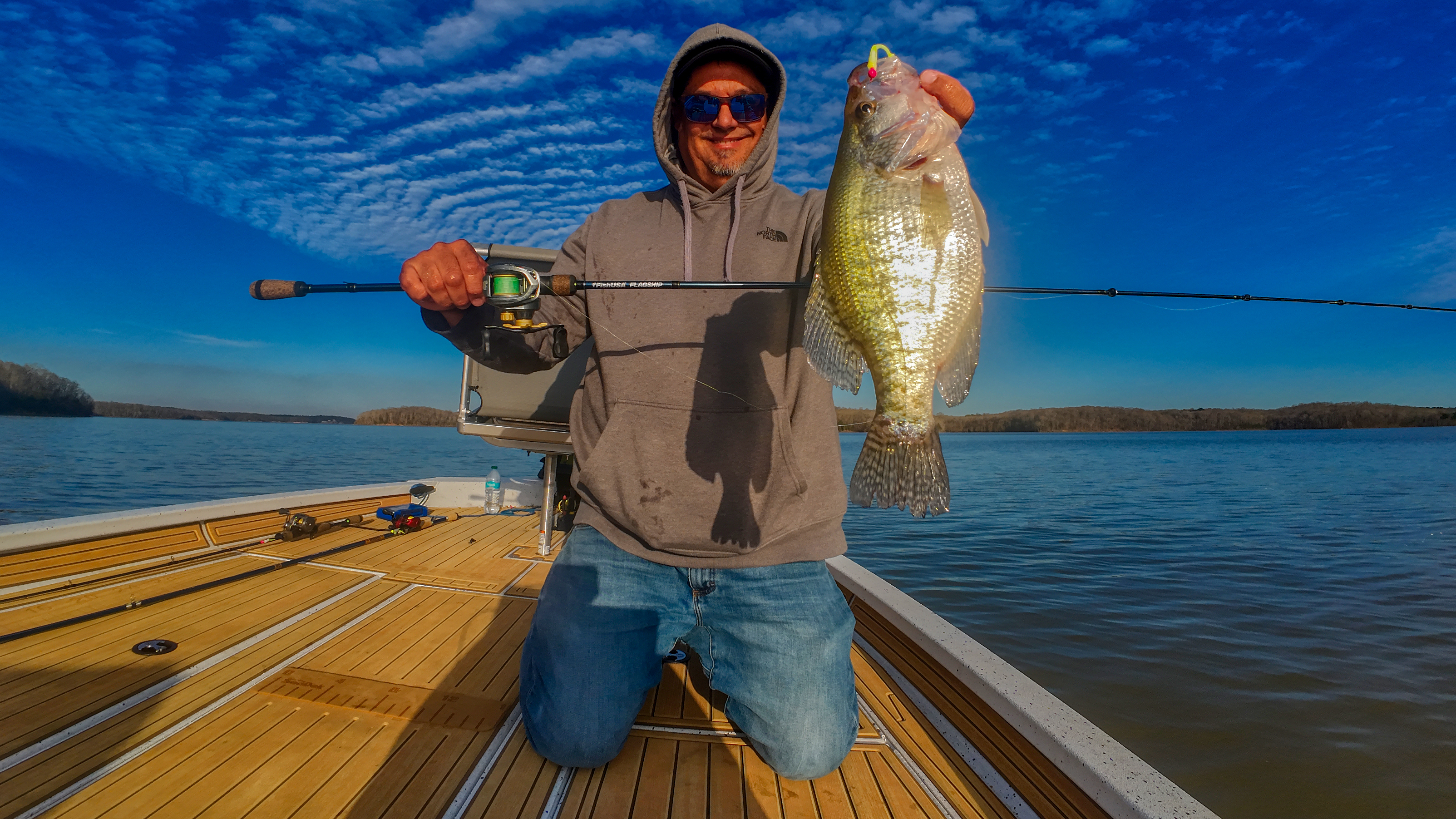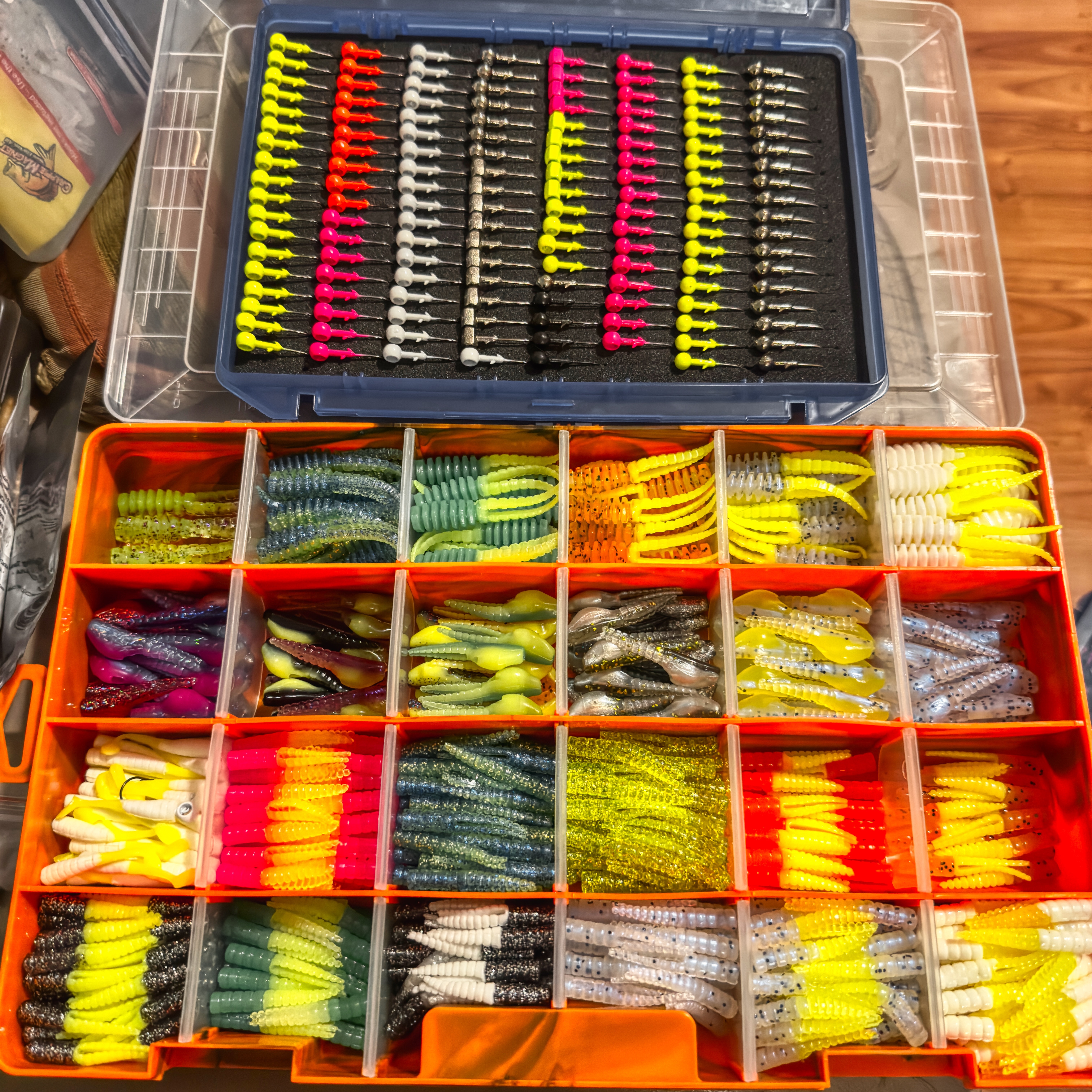How to Jig for Crappie: Tips, Tactics and Gear
By: Jason Sealock
September 10, 2025
When most anglers think of crappie fishing, they think of catching panfish on small jigs. Jigging for crappie can be one of the most efficient and effective ways to catch crappie all 12 months of the year. While the techniques and approaches can vary, crappie jigs have accounted for millions of crappie catches over the years. And now there is a jig to fit nearly every situation you will encounter in crappie fishing.
A full guide on jigging for crappie, as well as the best crappie jigs for success
When most anglers think of crappie fishing, they think of catching panfish on small jigs. Jigging for crappie can be one of the most efficient and effective ways to catch crappie all 12 months of the year. While the techniques and approaches can vary, crappie jigs have accounted for millions of crappie catches over the years. And now there is a jig to fit nearly every situation you will encounter in crappie fishing.
Whether you prefer casting jigs to targets or vertical jigging your crappie jigs, they effectively mimic a lot of things in a crappie's diet. From larvae to minnows, a jig looks like food to most crappie and will give you a proven lure with proven methods for catching crappie in a variety of ways and locations.
Table of Contents
What Is a Crappie Jig
A crappie jig is simply a lead or tungsten head on a hook with either a hand-tied hair configuration to make a custom hair jig or some sort of plastic body like a tube, curly tail, or the more modern shapes like shad bodies and swimbaits. Crappie jigs normally come in 1/32-ounce up to 1/4-ounce sizes. Most common sizes would definitely be 1/16-ounce and 1/8-ounce, with the latter being the choice for deep fish, muddy water, and bigger aggressive crappie (think springtime prespawn feeding fish).
You can tie one on your favorite crappie rod and go fishing, but your gear choices will generally depend on how you intend to fish a crappie jig. Will you be casting to cover under the surface from a distance or to open water fish? Will you be vertical jigging it over deep cover or on standing vertical cover like pole timber? Will you be fishing it around grass? The answers to these questions will dictate how you fish and what rod and line choices you make for jigging crappie.

How to Jig for Crappie
There are two primary methods of jigging for crappie. One is vertical jigging from the tip of the rod straight down in and around cover. The other is casting or making short pitches with a crappie jig to nearby cover or to open water fish and working the jigs back.
Jigging for crappie often has the connotation of vertical jigging. But as more folks have learned to chase roaming crappie and fish cover at a distance, a hybrid approach of pitching light jigs and working them up and down through cover has become more of the norm. Both approaches work very well to catch crappie, and it's usually simply deciding on the mood of the fish as to which one you should use.
I often start casting and pitching a jig with a 6 to 7-foot spinning or bait finesse setup. If I can get the fish to move to the jig at a distance, this usually works best. But if the fish are lethargic, pressured, or the water is really dirty, vertical jigging often becomes the necessary approach with a long rod.
Vertical Jigging
Using a long rod and lowering a jig down to fish in and around cover, or even over open water, is more about keeping a jig at a certain level just above the cover or the fish. This approach is usually more one-dimensional and less trial and error approach. You are simply lowering your jig down and working it slowly around and up and down the cover until a fish bites. You will often find that the fish react better to less movement. Just a slight jump or a slow raise or lower to make it look lively without moving the bait too much in any one direction will yield the most bites.
You can also lower your jig down to the level you think or know the fish are at and push the jig up to the cover slowly with your trolling motor if you are in a boat. A long rod and a vertical jigging approach can be a good way to fish nearby cover from the bank with a lot less hangups. Just lower your jig near the visible cover and probe for crappie effectively when on the bank.
Casting Jigs
When casting a jig, I find short pitches and slow, steady retrieves do the most damage. Even just letting the bait fall and pendulum through the fish or just over the top of the cover can yield a lot of strikes. Light line will enable you to throw lighter jigs. Thin braids can give you more distance.
The name of the game is casting just past the target and letting the jigs swing down to level, and then slowly moving the jig at that level until a fish reacts. You can let it drop to cover and swim it up and let it drop again. This provides you with a hybrid approach to vertical fish and cast jigs in one retrieve.

Best Gear to Jig for Crappie
Best Gear to Jig for Crappie
The gear can vary greatly when it comes to jigging for crappie. This is partly due to the fact that there are a lot of good rods on the market now for crappie anglers. And also because the ways you jig for crappie can vary greatly from vertical jigging with 18-foot rods to casting jigs to open water crappie with 6-foot spinning rods or bait finesse gear.
So we'll speak generally on what to look for in jigging crappie gear based on the various techniques around it. And then suggest some rods we like. But if you have a brand of crappie rods you like, chances are they have a good jigging rod or two in their lineup. Especially if you stick with the well-known names in crappie fishing like B'n'M Fishing, St. Croix, ACC, Outlaw, Lew's, and more.
Vertical Jigging Gear
If you plan to vertical fish and hold a jig over a fish in and around cover, you are likely looking for a longer rod, like a 10-footer or longer. You want a rod that has a sensitive tip so you can detect a light bite visually, but also has the backbone to "guide" a fish out of cover and even swing a decent fish into the boat if you don't have a long-armed net. I recommend the ACC Crappie Stix Super Grips Crossover Jigging Rod.
If you are dipping trees and have a lot of branches above you, a longer rod can be unwieldy. So I like a 10-footer when I'm in close to visible cover with a lot of obstructions around me. When I'm fishing more in open water from a boat and fish cover under the surface, I often want a much longer rod so that I can put the jig on a fish before my boat gets too close and spooks the fish off. I find 13-14 feet to be a nice sweet spot. Long enough to get my jig away from the boat noise. But not so long that I have a hard time handling the rod and the fish at a distance. I recommend the BnM Fishing Diamond Jig Pole Spinning Rod.
Now we are seeing a trend to what I call super-long rods. Rods are getting out there past 18 feet. All the way out to 25 feet. These newer rods are built off the Japanese designs, where Japanese anglers are buying $600-$800 carbon fiber and graphite telescoping rods that reach out to 25 and even 30 feet, but are made of super strong materials to be able to catch sizable ocean fish as well as freshwater fish in current dipping behind rocks. So these are not your old telescoping rods of the late 20th century. These are high-end materials and designs like the new B'n'M Ambush rod that extends out to 24 1/2 feet and is a major player for anglers like Steve Coleman now, who has perfected jigging crappie with super long rods already.
Casting Jigging Gear
If you want to cast or pitch your jigs to crappie in open water or around cover from a distance, you will want a flexible spinning or casting rod that can load with a small jig and get some distance. There are good ultra-light rods out there, but I find a medium-light or light rod with fast action often works better for crappie fishing, especially on fisheries where 2-pound crappie are not uncommon. A rod in the 5 1/2 to 7-foot range usually works best. My personal favorite is the FishUSA Flagship BFS Casting Rod.
If you pitch 1/8 ounce jigs, you can use a rod with some more backbone and faster action like the ACC Crappie Stix Green Series Rods. If you throw a lot of 1/16 and 1/32 ounce crappie jigs, you will want to go with a lighter power and a little slower action so the rod will load more for you to cast smaller jigs, like the Temple Fork Outfitters Trout Panfish II Spinning Rod.

Line Choices for Crappie Jigging
Two schools of thought prevail when it comes to jigging for crappie. A lot of anglers vertical jigging will use braid with a fluorocarbon leader. Something in the 7-10 pound range for braid and then a 4 to 8 pound fluorocarbon leader, depending on the cover and water clarity.
For most casting applications, a light braid with fluoro leader will work, but I find straight mono works equally as well. If I think the fish are really skittish, I will go down in line size or add a fluoro leader. But most of the time, a 4-pound monofilament line is really hard to beat for casting crappie jigs.
Reel Choices for Crappie Jigging
A spinning reel in size 500 or 1000 will work for most spinning rods. Long rods can also use bait casters. So it's a preference there. I generally will use a good spinning reel for rods I plan to cast and retrieve crappie jigs back. And I will use an inexpensive baitcaster on my long rods as it is just a line holder for the most part.
Best Crappie Jigs for Jigging
For crappie jigging, I will start with a big profile like a 1/8-ounce head and a bigger body bait like a Crappie Magnet Hammer early in the year when I think the fish are starting to feed up before the spawn. As the year goes on, I will continually downsize my offerings. In summer, I often use smaller jigs like Trout Magnets or 1/32-ounce hair jigs to catch weary and finicky crappie. As it gets back into fall, I will use more aggressive profiles and jigs with more action to take advantage of crappie feeding up before winter.
Much like crappie rods, you will find there are a plethora of options in crappie jigs. I tend to classify crappie jigs into big profiles, do-nothing options, and baits with action.
There are several good 3-inch or larger-sized crappie jigs like the Crappie Magnet Hammer, Bobby Garland Slab Slay'R, Mr. Crappie Scizzor Shad, Southern Pro Minnow Tubes, and more for when the crappie are aggressive and the water is dirty.
When you need to be more subtle, do-nothing jig there are a bunch of go-to options like the Bobby Garland Baby Shad, Crappie Magnet, Mr. Crappie Shad Pole, Southern Pro Hustlers, and more. They have moderate profiles with subtle motions that crappie love.
When you need your bait to provide more motion and action, it's hard to beat a curly tail or a swimbait tail, and these have become staples among crappie jiggers who like to cast jigs. Crappie baits like the Z-Man Micro Goat, Mr. Crappie Slabalicious, Baitfuel NanoSwim, Kalin's Triple Threat Grub, Charlie Brewer Sliders, and Southern Pro Hot Grubs all excel at catching crappie.
For those times when you need to downsize, jigs like the Bobby Garland Itty Bit Slab Hunt'R, Trout Magnet, Lelands Pop Eye Jigs, and Brush Pile Hand-Tied Jigs work wonders on tough crappie.

Putting It All Together
A crappie jig is one of the easiest and most effective ways to get into crappie fishing. And it's also one of the most productive ways to fish for crappie all 12 months of the year. No fighting with and keeping live bait alive. No fancy gear required. Take your favorite light action rod and a few jigheads and jig bodies and go casting and probing cover and likely shady areas until you find some willing crappie.
Shop Crappie Bait & Tackle

